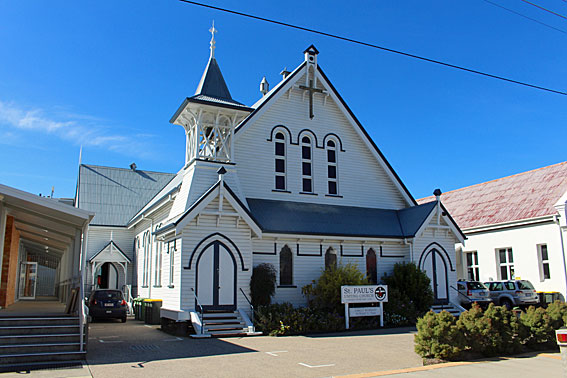
St Paul's Uniting Church, Mackay
[Photograph by Trevor Bunning (July 2015)]

St Paul's Uniting Church, Mackay
[Photograph by Trevor Bunning (July 2015)]
Historical and Technical Documentation by Geoffrey Cox
© OHTA 2011, 2018 (last updated June 2018)
The Presbyterian congregation in Mackay was established in 1872, and the first church was erected in 1875. The present timber building, designed by the Brisbane architect, Walter Carey Voller, was built in 1897-98. It was one of few public buildings in Mackay to withstand the 1918 cyclone. Clad in chamferboards, the building features steeply pitched gable roofs and an elaborately detailed timber belfry over one of the twin entry vestibules. It is a rare example of an intact nineteenth-century timber church in North Queensland.1
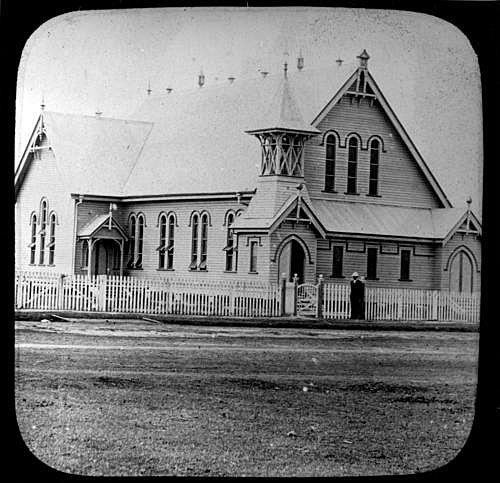
St Paul's Presbyterian Church, Mackay, c.1898
[Photograph: John Oxley Library, State Library of Queensland]
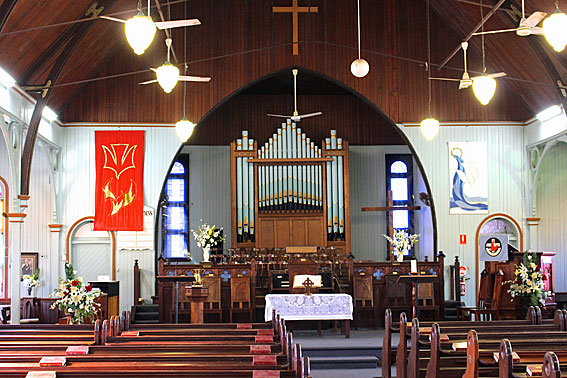
Interior of St Paul's Uniting Church, Mackay
[Photograph by Trevor Bunning (July 2015)]
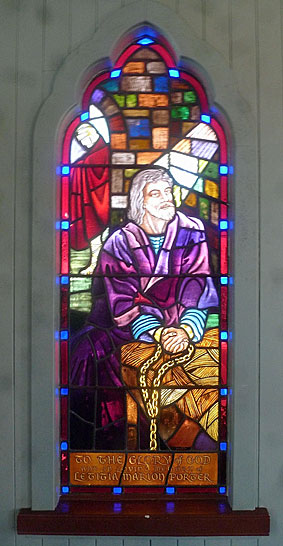
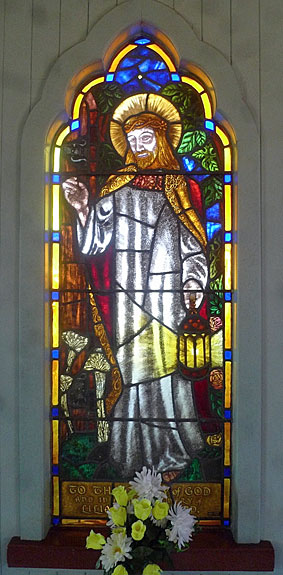
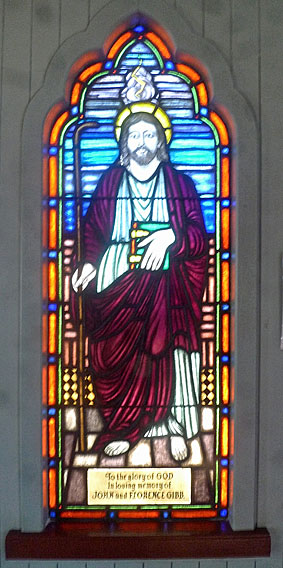
Three stained glass windows in the front façade of the church
[Photographs by Trevor Bunning (July 2015)]
The organ was built in 1953 by Whitehouse Bros of Brisbane at a cost of around £3,484.2 It is one of the later examples of the standardised pneumatic-action organs built by the firm from the early 1910s onwards. The specification is just one stop larger than that for the organ built in the previous year for the Presbyterian Church, Dalby, and there is a greater provision here of couplers than in Dalby. The inclusion of a Hohl Flute 8ft on the Great, rather than a Stopped Diapason 8ft, is unusual. The duplexing of the Swell string stop on the Great Organ had been a common feature on these instruments from the early 1930s onwards.

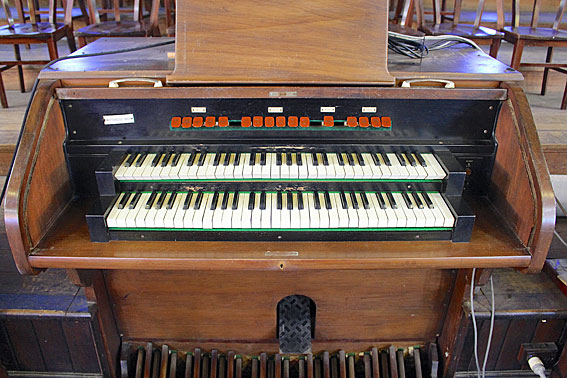
Console and Case of the Whitehouse organ
[Photographs by Trevor Bunning (July 2015)]
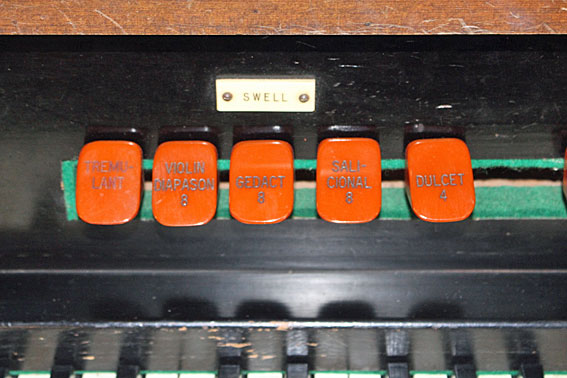

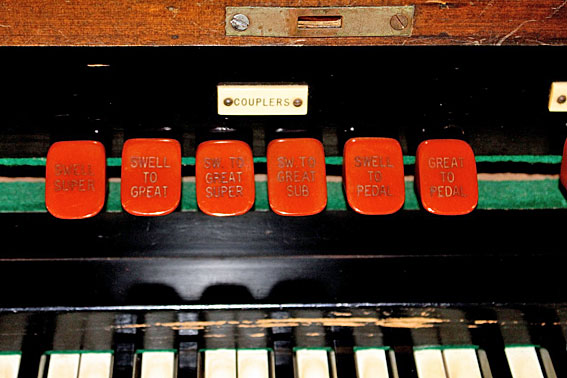
Stopkeys of the Whitehouse organ
[Photographs by Trevor Bunning (July 2015)]
The church was refurbished around 2000, and the organ was cleaned and regulated at this time.3
Repairs were undertaken by Pierce Pipe Organs in June 2018 following water damage.4
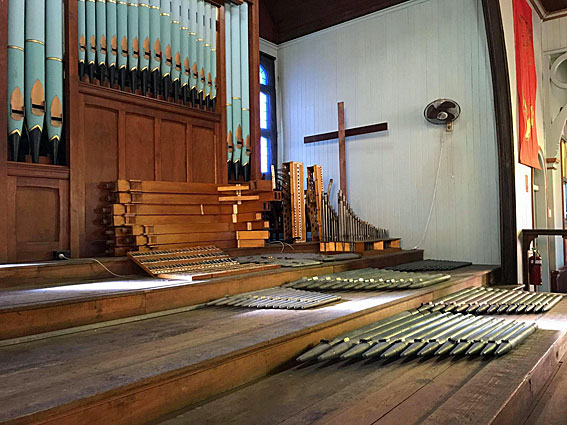
The organ dismantled for repairs in 2018
[Photograph posted 2 June 2018 on the facebook page of Pierce Pipe Organs:
www.facebook.com/Pierce-Pipe-Organs-137138762970557/]
The specification is as follows:
| GREAT Open Diapason Salicional Hohl Flute Flute SWELL Violin Diapason Gedact Salicional Dulcet PEDAL Bourdon COUPLERS Swell to Great Swell to Pedal Great to Pedal Swell Super Swell to Great Super Swell to Great Sub |
8 8 8 4 8 8 8 4 16 |
[from Swell] |
Swell tremulant
Detached stop-key console
Radiating concave pedalboard
Balanced swell pedal
Tubular-pneumatic action
Compass: 61/30.5
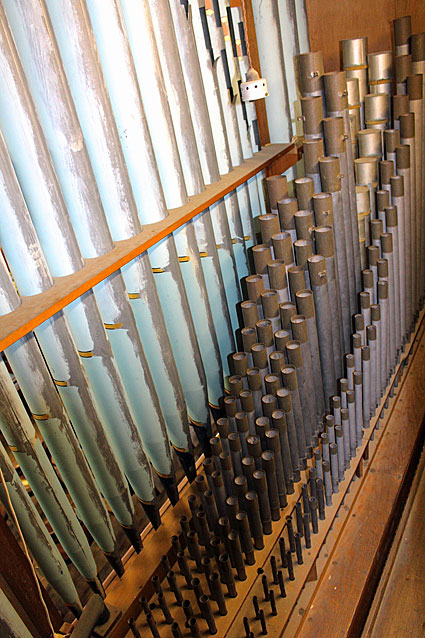
Great Pipework of the Whitehouse organ
[Photograph by Trevor Bunning (July 2015)]
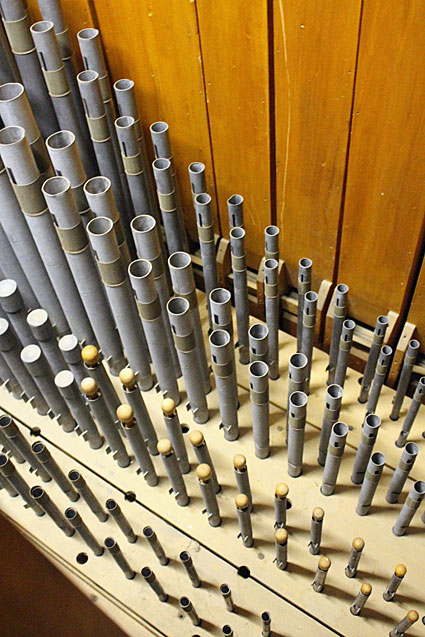
Swell Pipework of the Whitehouse organ
[Photograph by Trevor Bunning (July 2015)]
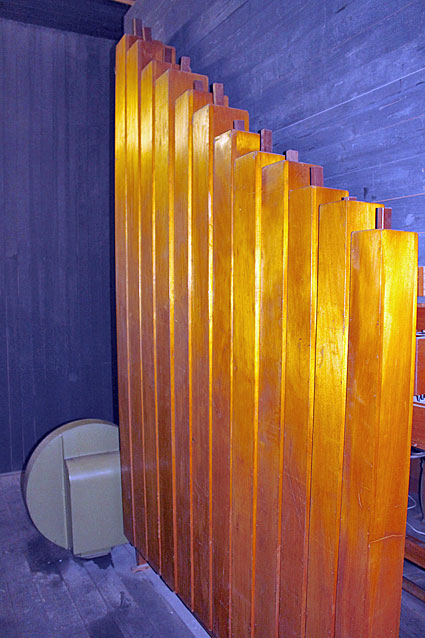
Pedal Bourdon at the rear of the organ
[Photograph by Trevor Bunning (July 2015)]

Pneumatic action
[Photograph by Trevor Bunning (July 2015)]
___________________________________________________________________
1 Queensland Heritage Council, Queensland Heritage Register, location 600668; Richard Bardon, The Centenary History of the Presbyterian Church of Queensland (Brisbane: W. R. Smith & Paterson, 1949), pp. 239-40; Donald Watson & Judith McKay, Queensland Architects of the 19th Century: A Biographical Dictionary (Brisbane: Queensland Museum, 1994), pp. 200-01.
2 Whitehouse Bros Ledger (1940-1954), p. 236.
3 The Organ Voice, vol. 27, no. 1 (March 2001), p. 29.
4 Personal communication to G. Cox from Simon Pierce, 16 June 2018.
5 Specification noted by G. Cox, July 1974.